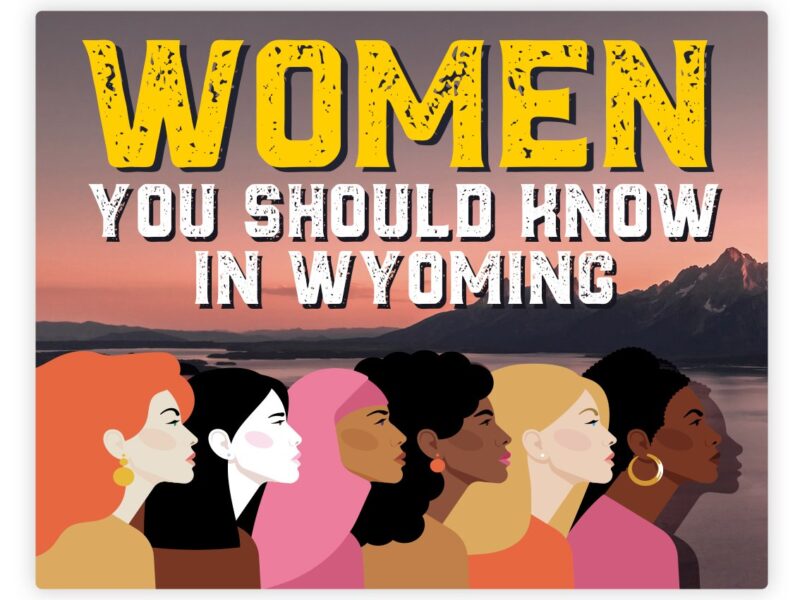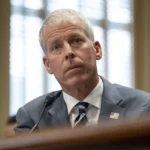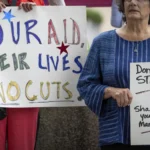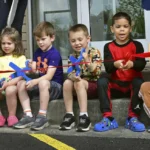WOMEN YOU SHOULD KNOW IN WYOMING: Riverton Woman Carries on Family Traditions
Bennie Sue Ridgley follows in her family’s footsteps by sharing story of Sand Creek Massacre
- Published In: Other News & Features
- Last Updated: May 31, 2023

By Elizabeth Sampson
Special to the Wyoming Truth
Nearly two decades after carrying the Olympic flame through Wyoming, Bennie Sue Ridgley continues to be a torch bearer for her community.

A Northern Arapaho descendent of Sand Creek Massacre survivors on both sides of her family, the two-time Wyoming cross country state champion strives to make sure the massacre is not buried in the pages of history. At the same time, Ridgley, 43, of Riverton, is ensuring the youngest generations of Arapaho know their culture is still alive and strong.
The Sand Creek Massacre took place on the southeastern plains of Colorado in 1864 on the traditional homeland of Ridgley’s ancestors. Members of the Cheyenne and Arapaho tribes were camped on the banks of the Big Sandy Creek. They believed they were under the protection of the U.S. Army and were flying a white flag over the camp. However, federal troops attacked the camp, killing about 230 Cheyenne and Arapaho people, mostly women, children and elders. Some of the troops then wandered among the bodies of the wounded and the dead and continued committing atrocities, according to the National Park Service.
Now a National Historic Site managed by the National Park Service, the Sand Creek Massacre site is a tragic part of Ridgley’s family history.
Ridgley’s grandfather is a descendent of Lame Man, an Arapaho who survived the massacre. Her grandfather spent time researching the massacre and created an elk hide painting of the tragedy based on oral histories passed down to him.
Along with her grandfather, Ridgley’s father and uncles have worked tirelessly for years to make sure the story of the massacre isn’t forgotten. Now Ridgley is following in their footsteps: She recently joined the board of directors of the Sand Creek Massacre Foundation, a nonprofit that supports the educational work of the Sand Creek National Historic Site.
“My grandpa always talked about the horrors of the massacre,” she said. “It’s just so hard—it’s really traumatizing. I wanted to get involved and try to do some work with them because I’ve seen them start from really nothing and get this far and still have so much more to go.”
Currently, the foundation is helping to develop a comprehensive research facility that will make archival resources about the massacre accessible through a digital research service. It also is working with the Colorado Department of Education to create materials to teach students about the massacre and collaborating with History Colorado to establish an exhibit in the historic site’s visitor center.
With a degree in Native American studies from Central Wyoming College, Ridgley said she wants to learn more about the history of her ancestors and Colorado history, so she can contribute to the awareness of what happened at Sand Creek.
“We’re trying to let everyone know it was a really terrible thing, [but] that we’re still here as people, that we’re still resilient,” she said. “We’re trying to keep our culture going, whether that be language or oral histories. We’re still here, and we’re still trying.”
Spiritual healing
The massacre location became a national historic site in 2007, thanks in part to the work of her grandfather, Eugene Ridgely, Sr. (Ridgley said her surname is spelled differently than her grandfather’s, because their family name was actually Ridge Bear. They received the government name of Ridgely, but her father spells it “Ridgley.”)

When Ridgley first saw the massacre site as a teen in the 1990s, it was commemorated only with a stone on a ranch. She and her family had traveled to the site to participate in the first Cheyenne and Arapaho spiritual healing run from the massacre site near Eads to Denver. The rancher who owned the land allowed them to see where the massacre occurred.
“We got to go take a look, but it wasn’t really much of a site yet,” she said. “There was nothing really established yet.”
That spiritual healing run was the first of many for Ridgley; she didn’t know what to expect at the time.
“They had it mapped out, and we ran along with the other tribes,” she said. “It was eye opening. You knew at the time what happened at the site was really terrible, and then to have descendants run to the capitol—really it was a new experience.”
During each year’s relay, runners retrace the route used by soldiers as they returned to Denver after the massacre—about 173 miles. It ends with a commemoration ceremony at the Colorado state capitol
“We did it over the course of three days,” she said. “It was tough. We ran a lot of miles, and switched off in different groups.”
Luckily, Ridgley excelled at running long distances. Her dad encouraged Ridgley and her five siblings to play basketball and run while they were growing up in Ethete on the Wind River Indian Reservation, and in Laramie, while he was attending the University of Wyoming. Ridgley soon realized that she loved to run.
“My dad would say, ‘I think you have a gift,’” Ridgley recalled. In middle school, she competed in Amateur Athletic Union (AAU) and USA Track and Field events around the country, and then went on to become the Wyoming high school cross country state champion as a freshman and junior and runner-up as a sophomore and senior.
At age 16, Ridgley even carried the Olympic Torch through a stretch of Wyoming for the 1996 Olympics after her cross country coach nominated her for the opportunity.
“It was such a huge honor,” Ridgley said. “We were able to carry the flame through Cheyenne on its way to Atlanta. I was just so excited.”
‘We’re still here’
Alexa Roberts, a former National Park Service employee, was instrumental in helping to secure national historic status for the site. She worked with Ridgley’s grandfather, dad and uncles on the project and now serves on the foundation board with Ridgley.
“As soon as I met Bennie Sue when she joined the foundation board last year, it was clear that she carries on her family’s legacy: strong (what an athlete!) yet humble, a true collaborator, and like her generations before her, so very respectful, not only of her own heritage, but towards everyone with whom she interacts,” Roberts said. “Meeting Bennie in person is being immediately drawn in to her warmth and sense of joy.”
In addition to her volunteer work, Ridgley is a stay-at-home mom to the three children (aged 14, 12 and 8) she shares with her partner, Ryan Ortiz. Part of her joy is watching them compete in track, basketball and softball.
Just like her grandparents on both sides and her parents, Ridgley shares her family’s oral history about Sand Creek with her children.
“We talk to our kids about what happened,” she said. “I think it’s important for them to know.”
Ridgley also wants her children to understand that where they come from and who they are matters.
“I want them to know that we’re still here, that their culture is just as important as anything else in this world,” she said. “That whatever they decide to do, to know that they are Arapaho. To just keep moving forward, just trying to do good in the world.”













